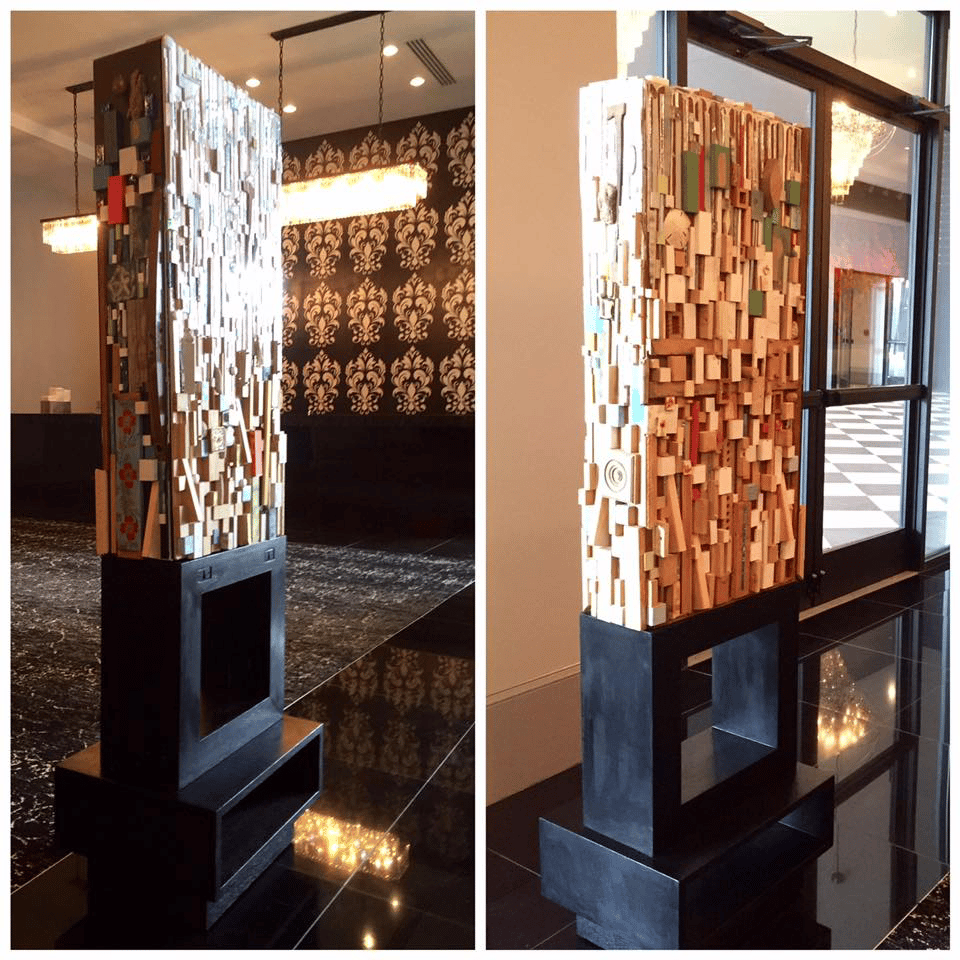
The Harvey B Gannt Centre for African-American Arts+Culture shares: ‘Quilts and Social Fabric: Heritage and Improvisation’, an upcoming exhibition at the centre in North Carolina featuring the work of Bahamian artist Lillian Blades. ‘Quilts and Social Fabric’ runs from July 16, 2016 – January 16, 2017.

‘Red Clay with Caribbean Spice’ (2016), mixed media assemblage, 4′ x 8′
This exhibition uses the work of one of the most renowned artistic quilt makers, Faith Ringgold, as an entry point to look backward at traditional African American quilts and forward to decorative and artistic quilts, and the work of painters and mixed media artists who improvise upon the form.
Quilt scholar, Maude Wahlman, has called African American quilts “the visual equivalent of blues, jazz, or gospel, rich with color and symbolism.” Many have reflections of African traditions built into them as they combine utilitarian and aesthetic elements. Quilts have long been used in African American life as both functional and symbolic objects, and catalysts for social interaction among women. Traditional quilt making has evolved into artistic expression, hung from walls rather than covering beds, and many fine artists have been inspired by them.
The West African cloth tradition includes the use of strips sewn together, as exemplified by the well-known kente cloth from Ghana, and the asymmetrical organization of kente can be found in traditional African American quilts. Additionally there is a patchwork practice that can be found in the Asafo flags of the Asante, and the egungun masquerade costumes of the Yoruba of Nigeria. The improvisational aspects of the patchwork tradition combined with the rhythmic organization create what Robert Farris Thompson calls “offbeat phrasing” to inform the musical aspects of quilt structures Wahlman points out.

‘Reflection’ (2016), mixed media assemblage
Many visual artists have drawn upon the principles and aesthetics of quilts as inspiration for their work and this exhibition will provide a brief exploration of these rich African and African American cloth tradition as a cultural and aesthetic idiom and a context for framing the work of Ringgold and younger artists who use this tradition as a reference and inspiration for their work.
This exhibit is generously sponsored by:
For the original article and more information, please follow this link.